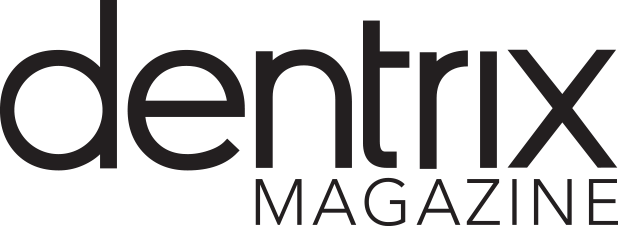Learn the five secrets to a successful daily huddle and how the Daily Huddle Report can help you prepare for your day.
Updated 6/30/20
The concept of a huddle, or mini-planning meeting, can be successfully seen in sports teams and in many businesses, including Zappos, Capital One, and the Ritz Carlton, to name just a few. Verne Harnish, author of Mastering the Rockefeller Habits, says a daily huddle is a key practice for successful companies. Dental practices are not any different. Taking no more than 15 minutes to communicate with the team provides a sense of community, vision, and clarity that helps everyone on the team focus on key goals and objectives. Put simply, a daily huddle helps you plan for success.
Some practices may say, “We tried daily huddles years ago. We didn’t have success at it and we haven’t tried again since.” If this rings true for you or your team, then it’s time for you to learn the secrets to a successful daily huddle which we’ll explain with the five daily huddle W’s: who, what, where, when, and why.
Who to Include
Everyone should be involved in the morning huddle. It is the impetus for a successful day in the dental practice. Each team member, including the doctor(s), has a responsibility and specific role in the morning huddle. It’s what prevents the huddle from becoming just a schedule review.
It’s normal for some team members to feel a bit reluctant at first, but if the culture of the team encourages everyone to participate, and the daily huddle happens consistently, team members will move past feeling reluctant because they’ll see that the benefits of the daily huddle far exceed the initial resistance. Some successful practices that hold daily huddles alternate who leads the huddle, which helps everyone learn to participate.
The Daily Huddle Report allows everyone on the team to see specific information about patients coming in for the day. For example, hygienists can see information such as overdue continuing care information, family members without a future appointment, or unscheduled treatment plans. Financial coordinators can see overdue balances, patients who do not have an email address on file, insurance ineligibilities, or patients without insurance. The Daily Huddle Report can be saved with every team member’s preferences, making it easier for each team member to come to the morning huddle equipped with valuable information.
To run the Daily Huddle Report, from the Office Manager’s Analysis menu, click Practice Advisor. The Practice Advisor dialog box appears.


Click Daily Huddle Report. The Daily Huddle Report dialog box appears.


Specify the options and details you want to include in your Daily Huddle Report, and then click Preview. The report may take a while to generate, but you can continue working in Dentrix while you wait.
What to Discuss
Have a specific agenda to follow. This keeps the focus on track and creates order as you plan for the day. Create a list of topics to discuss. Be sure to include all areas of the dental practice each day to avoid unnecessary surprises.
The Daily Huddle Report serves two very important purposes. The first is to provide a quick snapshot of how the practice did yesterday, what today is looking like, and a forecast for the rest of the month. This allows you to see on a daily basis how you are progressing toward your monthly goals. The second purpose is to provide valuable information about patients coming in for the day.
Ginger Roberts, office manager at Family & Implant Dentistry in Cincinnati, OH says, “The Daily Huddle Report has transformed our morning meeting. It is so easily customizable, we can get only the information we feel is important for our morning huddle. This report has saved me hours–each week–in the process of gathering information. The summary page is my favorite. All the information is right there at your fingertips!”
The daily huddle is a great time to provide important reminders to members of your team. For example, remind team members that if patients give the practice a compliment, team members should ask the patient for referrals and post their comments on the practice’s Facebook page.
Where to Huddle
Huddles should take place in a location where the entire team can easily gather and talk without distractions. It is helpful if the schedule can also be displayed during the huddle for easy reference. For example, the huddle can take place in the break room with a flatscreen TV displaying the schedule for the day. If this is not possible, you can print copies of the Daily Huddle Report for team members so they can review today’s schedule as well as the key performance indicators for yesterday. Some practices choose to have their huddle standing up to help keep the meeting short and focused.
When to Huddle
The daily huddle is most effective when done before the day begins. Allow at least 10 minutes to discuss the agenda and address potential obstacles. Allow an additional five minutes before the huddle begins for the team to properly prepare for it. And, prepare to wrap up the huddle five minutes before the start of the day to allow the team an opportunity to create a final checklist before the first patient arrives for treatment. Some practices find that by starting their daily huddle at an “odd” time it increases the on-time attendance of team members. For example, if you normally start your daily huddle at 8:00 a.m., try starting it at 8:03 a.m. instead. You may find that more team members show up for work at 8:00 and are ready to start at 8:03.
The number one reason that practices say they do not have daily huddles is that they simply do not have enough time. However, the Daily Huddle Report automates data collection, saving the average practice at least 60 minutes a day. Some practices say they don’t have daily huddles because not all team members start working at the same time of day. Using the Daily Huddle Report can help overcome that challenge. Simply hold the daily huddle as soon as most team members can be there, and print the report for other team members who arrive later. You can assign someone who attended the huddle to share important details with the absent team members. Today, for practices to reach their potential, it is almost imperative that they make a daily huddle part of their daily routine. Practices that use the Daily Huddle Report not only save time, but they also have tools to help them reach even greater success throughout their busy days.
Why to Huddle
Reviewing the schedule before the day actually begins allows the entire team to identify potential roadblocks and obstacles during the day. For example, the huddle allows the team to identify patients who can be moved from operative to hygiene, if overdue for a hygiene appointment; hygiene patients with overdue family members; and undone dentistry that can be completed because the patient is already present for another appointment.
The Daily Huddle Report provides valuable patient information so your practice can maximize patient visits. The report shows unscheduled treatments, overdue continuing care, other family members without an appointment, overdue accounts, and much more. There is no better time to have these discussions with patients than when the patients are in your office having face-to-face conversations with team members.
Jim Philhower of Henry Schein Dental says, “One major X-ray missed every day equates to at least a $20,000 loss in annual production.” Offices that are using the Daily Huddle Report and the continuing care features in Dentrix are able to quickly identify which patients coming in today need a major X-ray. Not only is this important to production, but even more importantly, it’s essential for excellent patient care. Major films are approved by major insurance companies to be taken every three to five years for a reason: they help detect potential problems that proactive treatment can address so that major work, or the loss of a tooth, is less likely to occur down the road.
Management guru Peter Drucker said, “What gets measured gets improved.” By using the Daily Huddle Report, practices can plan for more productive days and measure daily progress towards monthly and yearly goals. The daily huddle can be the most valuable 15 minutes in a practice’s day. Not having a morning huddle really shouldn’t be an option.
6 Tips for Successful Daily Huddles
1. Let leaders lead. Having the doctor attend and participate in the daily huddle is essential. Even if the doctor doesn’t lead the huddle, he or she can help reinforce key concepts or the culture of the practice throughout the meeting.
2. Leverage the 21-day rule. Give the daily huddle time to become part of the practice’s daily routine. Some behaviors, if repeated 21 days in a row, can easily become a habit. Give your morning huddle at least one month to become second nature. Most practices start to realize the benefits of the huddle in less than a week. Remember, change isn’t always easy, but if you’re not challenging status quo, you are not changing status quo.
3. Keep it short and start at an odd time. The most effective daily huddles take less than 15 minutes. Some practices find that starting at 8:03 a.m. instead of 8:00 a.m. increases the team’s on-time attendance.
4. Start with a quick motivational thought, idea, video, ritual, etc. It can be as simple as a quote or thought for the day.
5. Keep it casual and fun. If your huddle is too formal, team members may feel like it’s just another meeting instead of feeling like they belong to a passionate community committed to creating raving fans through excellent patient care.
6. Be transparent. Practices that have open and honest communication reach their potential easier, faster, and with fewer roadblocks.
Learn More
To learn more about the Daily Huddle Report, see the Daily Huddle Report topic in the Dentrix Help.
Read Supercharge Your Daily Huddle for more ideas about making your morning meeting more meaningful.
Get a free 30-minute Practice Advisor assessment to learn the next steps to increase your profitability. Visit https://www.dentrix.com/products/dentrix-profitability-coaching/.
By Lois Banta, CEO of Banta Consulting, Inc. and Tammy McHood, Senior Product Manager
Lois Banta is CEO, President, and Founder of Banta Consulting, Inc., a company that specializes in all aspects of dental practice management. Lois has over 37 years of dental experience and consults and speaks nationally and internationally. She is also the owner of The Speaking Consulting Network, and a member of the Academy of Dental Management Consultants (ADMC), American Academy of Dental Practice Administration (AADPA), American Dental Assistants Association (ADAA), National Speakers Association (NSA), and American Academy of Dental Office Managers (AADOM). To contact Lois for consulting or professional speaking invitation, call 816-847-2055.
Originally published in Dentrix Magazine, Summer 2013





